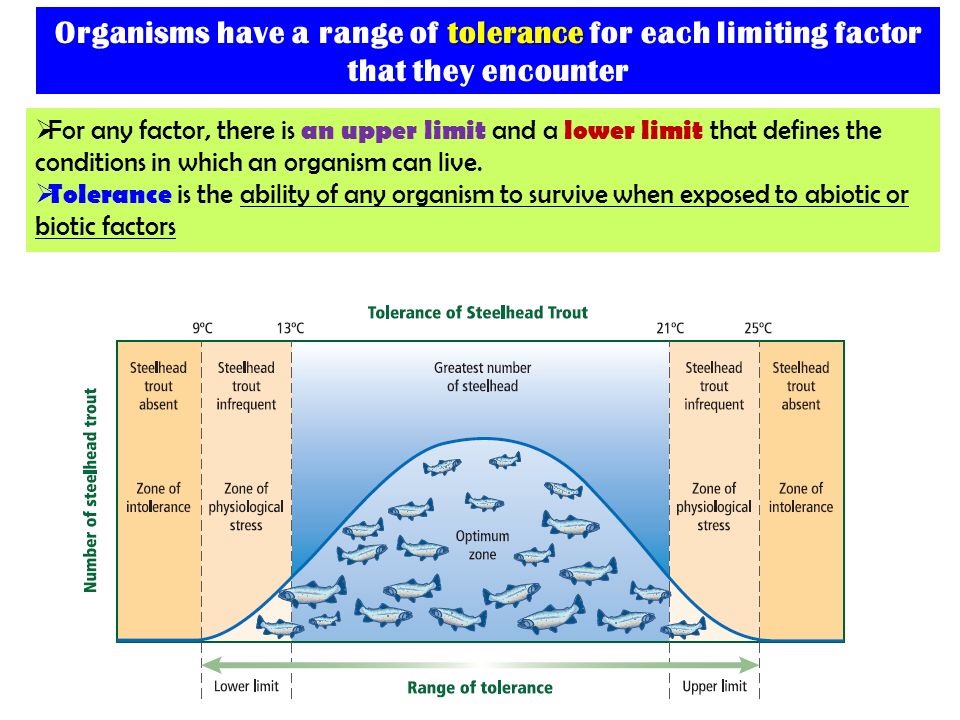REASONING: Take for example stealhead trout. the limiting factor in this case is water temperature. trout can tolerate water temperatures between 9decreas celcius and 25decrea celcius. most trout live in the optimum zone, which is the temperature range that is best for trout survival.
Fish have evolved very efficient physiological mechanisms for obtaining and using oxygen in the water to oxygenate the blood and meet their metabolic demands (WDOE 2002). However, reduced levels of dissolved oxygen can impact growth and development of different life stages of salmon, including eggs, alevins, and fry, as well as the swimming, feeding and reproductive ability of adult and such as tolerance levels. tolerance levels are the ability of an organism to endure extreme dyness. Such impacts can affect fitness and survival by altering embryo incubation periods, decreasing the size of fry, increasing the likelihood of predation, and decreasing feeding activity. Under extreme conditions, low dissolved oxygen Fish have evolved very efficient physiological mechanisms for obtaining and using oxygen in the water to oxygenate the blood and meet their metabolic demands (WDOE 2002). However, reduced levels of dissolved oxygen can impact growth and development of different life stages of salmon, including eggs, alevins, and fry, as well as the swimming, feeding and reproductive ability of adult and such as tolerance levels. tolerance levels are the ability of an organism to endure extreme dyness. Such impacts can affect fitness and survival by altering embryo incubation periods, decreasing the size of fry, increasing the likelihood of predation, and decreasing feeding activity. Under extreme conditions, low dissolved oxygen concentrations can be lethal to salmonidconcentrations can be lethal to salmonids.
Population dynamics are typically affected by a combination of density-independent and density-dependent factors, the latter of which have been conceptually and theoretically linked with how variable population sizes are over time—which in turn has been tied to how prone populations are to extinction. To address evidence for the occurrence of density dependence and its relationship with population size variability, we quantified each of these for 126 populations of 8 species of Salmoniformes. Using random-effects models, we partitioned variation in the strength of density dependence and the magnitude of between and within species and estimated the correlation of density dependence and population size variability at both the between- and within-species levels.Contrary to theoretical and conceptual expectations, the strength of density dependence and the magnitude of population size variability were positively correlated at the between species level (r = 0.90), although this estimate had 95 % credibility intervals (Bayesian analogues to confidence intervals) that overlapped zero.

